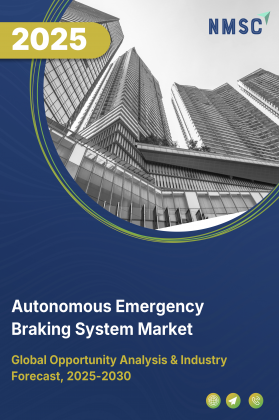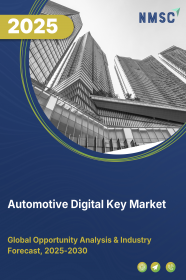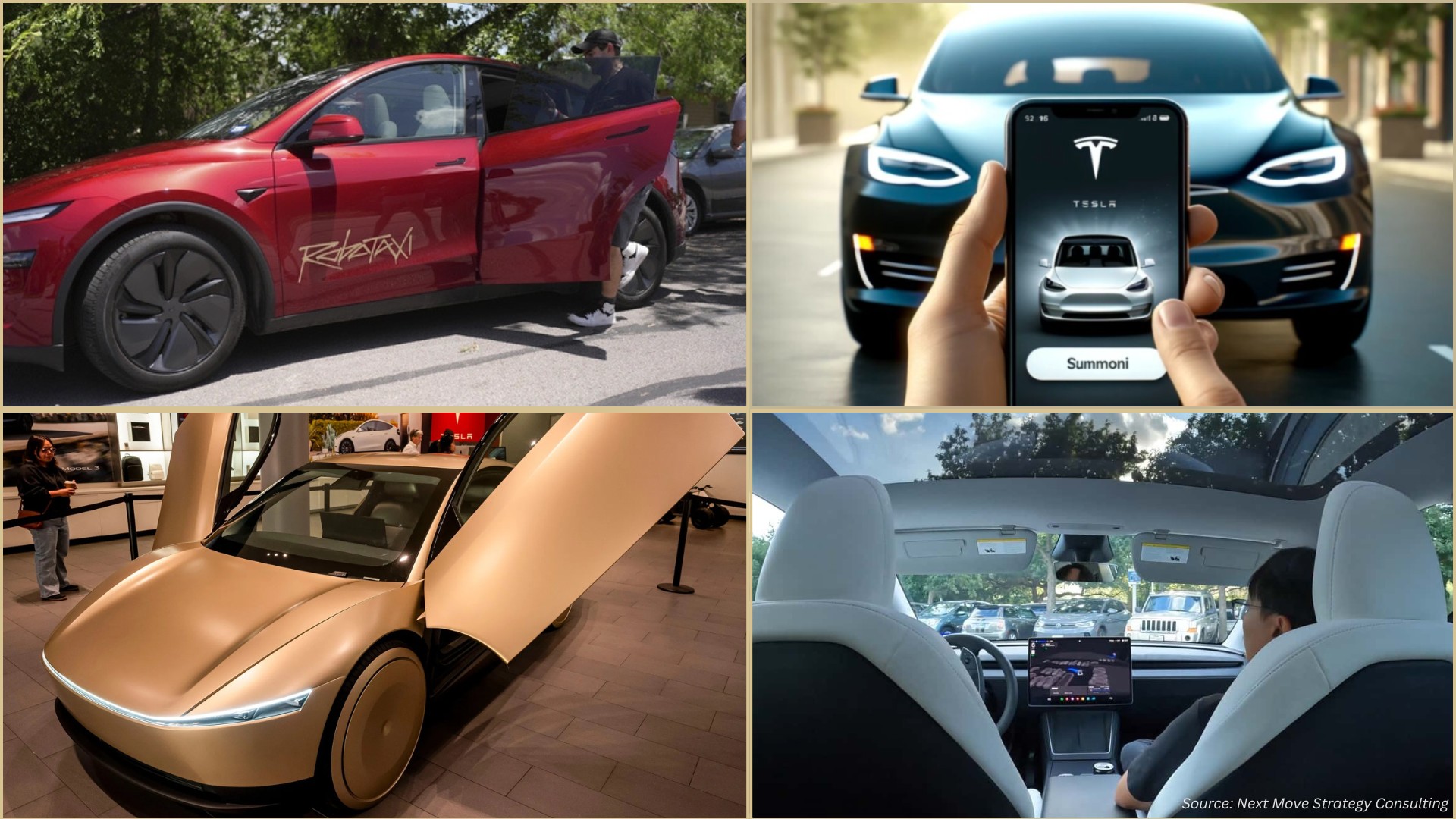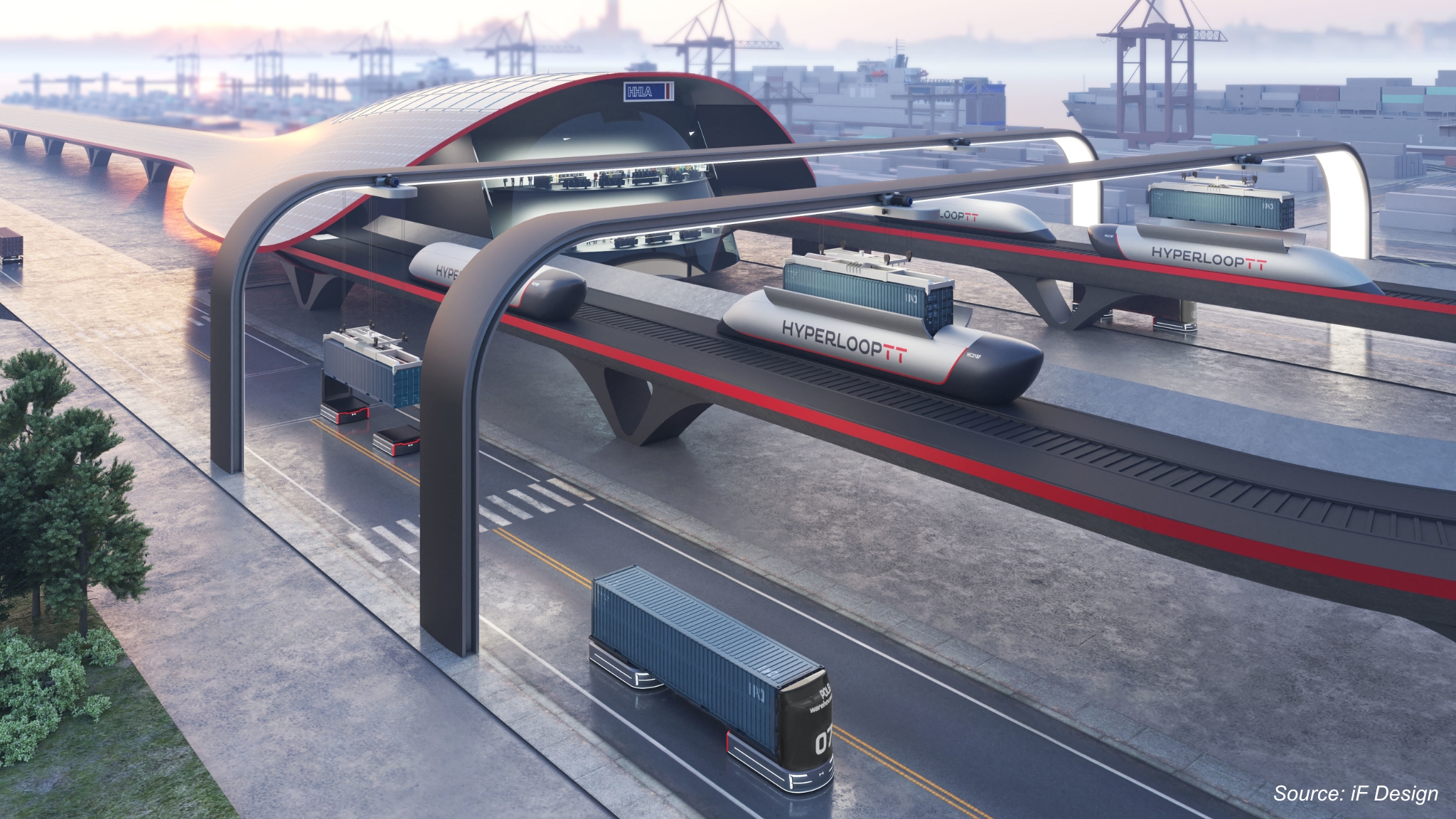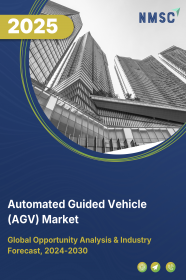
Automated Guided Vehicle (AGV) Market by Type (Tow Vehicle, Unit Load Vehicle, Pallet Truck, Forklift Vehicle, and Other Type), by Navigation Technology (Laser Guidance, Magnetic Guidance, Optical Tape Guidance, Vision Guidance, and Other Navigation Technology), by Payload Capacity (100-250 kg, 250-500 kg, 500-1000 kg, 1000-1500 kg, 1500-2000 kg, and Above 2000 kg), and Others – Global Opportunity Analysis and Industry Forecast, 2024 – 2030
Industry: Automotive & Transportation | Publish Date: 12-Sep-2025 | No of Pages: 552 | No. of Tables: 702 | No. of Figures: 647 | Format: PDF | Report Code : AT461
Market Definition
The Automated Guided Vehicle (AGV) Market size was valued at USD 5.60 billion in 2023, and is predicted to reach USD 11.19 billion by 2030, with a CAGR of 9.7% from 2024 to 2030. Also, in terms of volume the automated guided vehicles (AGV) market size was 326,169 units in 2023, and is predicted to reach 939,314 units in 2030, with a CAGR of 15.2% from 2024 to 2030. Automated Guided Vehicles (AGVs), also know as vision guided vehicle or laser guided vehicle is a subset of the broader mobile robot’s industry that are guided by predetermined paths or navigation systems operates within warehouses, distribution centers, or manufacturing facilities.
They are designed to automate tasks for which humans are not necessary, such as long walks in warehouses or transporting materials and finished products. Latest AGVs comes with vision guided sensors to avoid collisions which makes them one step smarter than the traditional AGVs. These vehicles offer several advantages, including improved accuracy, flexibility, and adaptability to various applications and industries. AGVs play a key role in the implementation of Industry 4.0 principles, contributing to the creation of smart factories.
Rising Labor Cost Fuels the adoption of AGVs in Industries
The escalating costs of labor have emerged as a pivotal factor propelling the growth of the AGV industry due to the increasing expenses related to wages and benefits, industries are strategically turning to AGVs as a solution to reduce reliance on human labor for routine and repetitive tasks. AGVs offer a cost-effective alternative, operating with continuous precision, consistency, and safety.
Their scalability allows businesses to adapt to changing production volumes without additional hiring, enabling flexible and efficient operations. According to the Employment Cost Index (ECI), which measures the change in the hourly labor cost to employers over time, rose 1.1% in the third quarter of 2023, following a 1.0% increase in the April-June period.
Moreover, the ability of AGVs to work round the clock aligns with the need for enhanced operational efficiency. While there is an initial investment, companies view AGVs as a long-term strategy to achieve a favorable return on investment through labor cost savings, improved accuracy, and heightened safety measures. In a competitive market landscape, AGVs position businesses as innovative and cost-effective, further driving their adoption as a strategic imperative in the face of rising labor costs.
Growing Emphasis on the Automation and Industry 4.0 Influence the Industry
The widespread adoption of AGVs in various industries is driven by the surge in automation and the principles of Industry 4.0. Companies are adopting AGVs to elevate their operational paradigms and achieve heightened operational efficiency. AGVs are key components in automating material handling and logistics processes, and their integration aligns seamlessly with the broader objectives of Industry 4.0.
According to the International Federation of Robotics (IFR), the latest report shows a record 517,385 new industrial robots were installed globally in 2021, marking a 31% YoY growth and surpassing the pre-pandemic 2018 record by 22%. The total operational robot stock now stands at about 3.5 million units worldwide.
AGVs reduce dependency on manual labor, cut labor costs, and contribute to the realization of smart factories. The adoption of AGVs is a strategic step towards achieving a more efficient, cost-effective, and digitally connected manufacturing ecosystem. The growth of the AGV industry is influenced by factors such as increasing demand for automation, advancements in robotics technology, benefits across various industries, and industry-specific demand.
Initial Investment Costs & Complex Implementation Process
The upfront costs associated with acquiring and implementing AGVs can be significant. This includes the cost of the AGV units themselves, as well as expenses related to system integration, infrastructure modifications, and technology upgrades. Integrating AGVs into existing operational environments can be a complex process. It may require substantial planning, coordination, and modifications to the facility layout. The complexity of implementation can hinder adoption, especially for businesses with limited resources or time constraints.
Introduction of AGVs for Semiconductor Industry Presents Opportunities
The advancement of Automated Guided Vehicles (AGVs) in the semiconductor sector offers substantial potential. AGVs are specially designed for the unique requirements of semiconductor manufacturing, where cleanroom environments and precise transportation are critical.
These vehicles efficiently move carriers such as cassettes and reticles within the facility, contributing to the streamlined and automated internal loading of process tools. The utilization of AGVs in semiconductor plants provides advantages such as cost-effectiveness, flexibility, and high precision in material handling.
Companies such as Castec International and Murata Machinery have been actively engaged in developing and expanding AGVs tailored to the semiconductor industry, utilizing established components and advanced navigation systems to enhance performance and reliability.
North America Holds a Leading Position in the AGV Market
The North America holds the predominant share in the AGV industry. This is attributed to the factors such as the highest number of warehouse automation in this region, with the U.S. leading at the forefront. According to the Robotic Industries Association (RIA) report, there is a 19.6% increase in non-automotive robot orders in North America during Q1 2021, with 9,972 robots valued at USD 485 million ordered.
These figures highlight the growing importance of robotics and automation in warehouse operations, emphasizing the pivotal role of robotics in shaping the future of warehousing. Moreover, prominent companies such as Mitsubishi Logisnext Americas and Jungheinrich are collaborating to develop AGVs for specialized purpose. This robust offering is a major driver fueling market demand in the North America region.
Recently, Mitsubishi Logisnext Americas (MLA) and Jungheinrich launched Rocrich AGV Solutions, a joint venture that will provide mobile automation solutions from standard to special-purpose AGVs and automated forklifts in North America. The collaboration aims to capture a significant portion of the projected growth in the North American material handling automation market.
In addition, the growing investment in US-based companies is a crucial factor influencing the demand for vision-guided vehicles in North America. Robotics companies raised a total of USD 1.84 billion through 50 investments in September 2023, with US-based companies securing the majority of it, accounting for USD 1.44 billion.
This shows a positive future prospect for the overall robotics industry, thus boosting the AGV market as well. The AGV market is likely to witness significant growth in the coming years due to the surging demand for e-commerce, healthcare, and other key industries.
Asia-Pacific Estimated to Witness Significant Growth in the Market
Asia-Pacific is poised to witness the significant growth during the forecast period, fueled by adoption of Industry 4.0 initiatives in across the region. As an example, Australia has introduced an Industry 4.0 Taskforce, while India has launched its Industry 4.0 Vision, and Indonesia has initiated Making Indonesia 4.0. These initiatives are fueling the demand for robotics solutions, including AGVs, as companies seek to optimize production capabilities and logistics operations.
Moreover, the increasing utilization of mobile robots especially in the rapidly expanding e-commerce industry propels the growth of the automated guided vehicle industry. As these vehicles are essential for optimizing warehouse, distribution, and manufacturing operations.
According to the estimates by Cello Square and eMarketer, leading countries in terms of retail e-commerce sales was dominated by the Asia countries with Philippines and India recording the growth of 24.1% and 22.3% by the end of 2022. In addition, AGVs are expanding their traditional applications, with regional ports embracing their use to reduce labor costs and boost productivity. Recently, PSA Singapore Tuas Port adopted 54 electric AGVs powered by Durapower batteries. This move aligns with the port's goal of achieving net-zero emissions by 2050, showcasing the rising demand for logistics automation in the Asia-Pacific region.
Competitive Landscape
Various market players operating in the AGV market include Toyota Industries Corporation, KION GROUP AG, JBT Corporation, SEER Robotics GmbH., Jungheinrich AG, Addverb Technologies Limited, ABB Ltd., Daifuku Co., Ltd., KUKA AG, EK robotics GmbH, Murata Machinery, Ltd., Oceaneering International, Inc., AGVE AB, Kyoritsu Electric Pvt Ltd., Dematic, and others. These market players are adopting strategies such as collaboration and product launches across various regions to maintain their dominance in the automated guided vehicle market.
For instance, in June 2023, Jungheinrich and Mitsubishi Logisnext launched Rocrich AGV Solutions, a joint venture expanding mobile automation in North America. The partnership combines Rocla and Jungheinrich's AGV portfolios, offering a comprehensive range of solutions. It reflects the growing demand for logistics automation in North America.
Moreover, in June 2023, Dematic, a subsidiary of KION Group launched third-gen freezer-rated AGVs in Australia, featuring advanced sensor and navigation tech, exceeding global safety standards. It is designed for freezer environments, these AGVs address challenges in cold storage facilities, showcasing Dematic's commitment to continuous improvement with cutting-edge technology.
In addition, in April 2021, Toyota Industries Corporation (TICO) launched T-Hive, a software for autonomous vehicles (AVs), including automated guided vehicles and autonomous mobile robots. This development aims to unify control systems across TICO AVs, leveraging existing solutions to drive global innovations in response to the rising demand for logistics automation, especially in the Asia-Pacific region.
Key Market Segments
By Type
-
Tow Vehicle
-
Unit Load Vehicle
-
Pallet Truck
-
Forklift Vehicle
-
Other Type
By Navigation Technology
-
Laser Guidance
-
Magnetic Guidance
-
Optical Tape Guidance
-
Vision Guidance
-
Other Navigation Technology
By Payload Capacity
-
100-250 kg
-
250-500 kg
-
500-1000 kg
-
1000-1500 kg
-
1500-2000 kg
-
Above 2000 kg
By Application
-
Transportation & Distribution
-
Storage & Assembly
-
Packaging
-
Trailer Loading & Unloading
-
Raw Material Handling
-
Waste Management
By End User
-
Automotive
-
Food & Beverage
-
Healthcare
-
E-commerce & Retail
-
Semiconductor
-
Other End User
By Region
-
North America
-
The U.S.
-
Canada
-
Mexico
-
-
Europe
-
The UK
-
Germany
-
France
-
Italy
-
Spain
-
Denmark
-
Netherlands
-
Finland
-
Sweden
-
Norway
-
Russia
-
Rest of Europe
-
-
Asia-Pacific
-
China
-
Japan
-
India
-
South Korea
-
Australia
-
Indonesia
-
Singapore
-
Taiwan
-
Thailand
-
Rest of Asia-Pacific
-
-
RoW
-
Latin America
-
Middle East
-
Africa
-
Key Players
-
Toyota Industries Corporation
-
KION GROUP AG
-
JBT Corporation
-
SEER Robotics GmbH.
-
Jungheinrich AG
-
Addverb Technologies Limited
-
ABB Ltd.
-
Daifuku Co., Ltd.
-
KUKA AG
-
EK robotics GmbH
-
Murata Machinery, Ltd.
-
Oceaneering International, Inc.
-
AGVE AB
-
Kyoritsu Electric Pvt Ltd.
-
Dematic
REPORT SCOPE AND SEGMENTATION:
|
Parameters |
Details |
|
Market Size in 2023 |
USD 5.60 Billion |
|
Revenue Forecast in 2030 |
USD 11.19 Billion |
|
Growth Rate |
CAGR of 9.7% from 2024 to 2030 |
|
Market Volumes in 2023 (units) |
326,169 |
|
Volumes Forecast in 2030 (units) |
939,314 |
|
Growth Rate |
CAGR of 15.2% from 2024 to 2030 |
|
Analysis Period |
2023–2030 |
|
Base Year Considered |
2023 |
|
Forecast Period |
2024–2030 |
|
Market Size Estimation |
Billion (USD)/ Units |
|
Growth Factors |
Rising Labor Cost Fuels the adoption of AGVs in Industries Growing Emphasis on the Automation and Industry 4.0 Influence the Industry |
|
Countries Covered |
27 |
|
Companies Profiled |
15 |
|
Market Share |
Available for 10 companies |
|
Customization Scope |
Free customization (equivalent to up to 80 working hours of analysts) after purchase. Addition or alteration to country, regional, and segment scope. |
|
Pricing and Purchase Options |
Avail customized purchase options to meet your exact research needs. |




















 Speak to Our Analyst
Speak to Our Analyst



